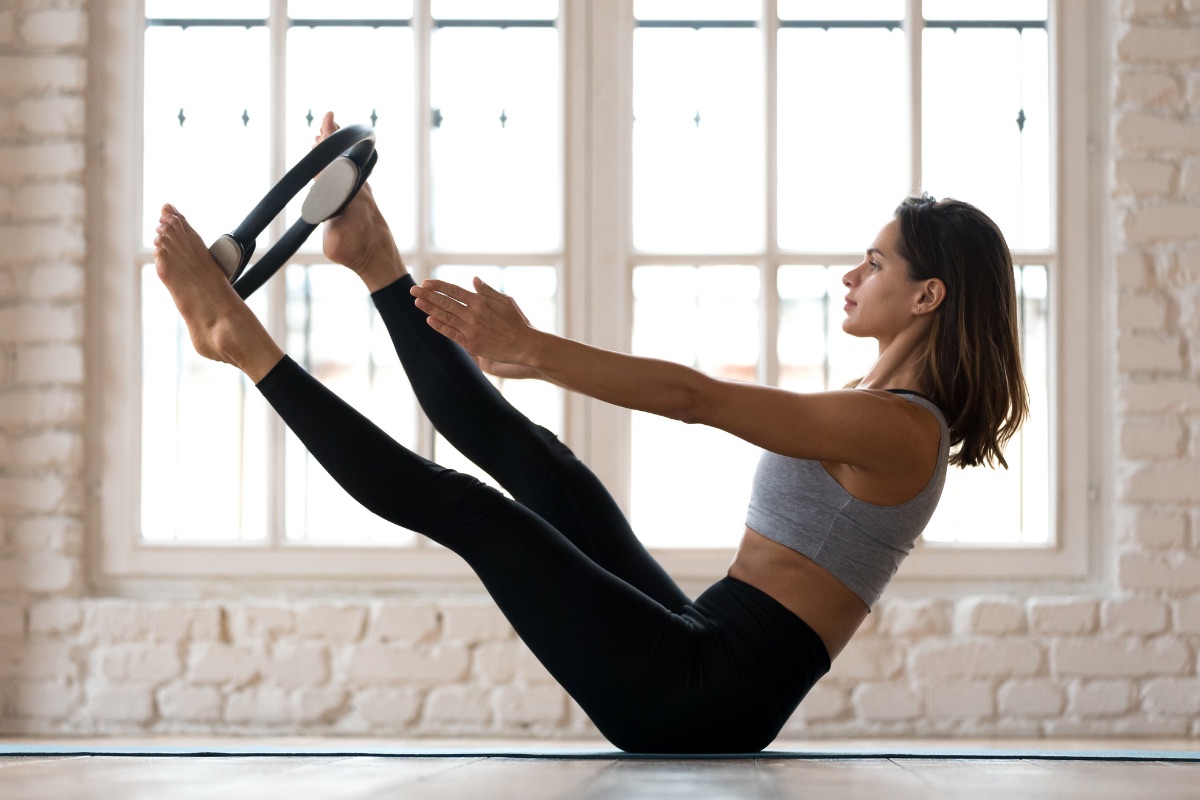
What is Pilates?
Pilates is an exercise method developed by Joseph Pilates (1883-1967). Known today as “Classical Pilates” this method consists of an extensive repertoire of exercises performed on a mat, often in a specific order, and sometimes using specially designed pieces of equipment. A physical fitness visionary, Joseph Pilates taught his students to move so that body and mind worked together - for power, grace and symmetry.
Are there different types of Pilates?
Today, both classical and contemporary styles of Pilates exist. At my studio, Body Harmonics, we teach a contemporary approach that takes the best of the original method and enhances it with modern exercise science and biomechanics to make it accessible and effective for ‘EVERYbody’. We teach you how to sense, condition, care for, and get the most from the remarkable machine that is your body. We focus on developing the body in a mindful and systematic way so that you can move well at every age and stage.
How is Pilates different from other forms of exercise?
Unlike traditional forms of fitness or weight training, Pilates focuses on movement efficiency rather than on muscular effort. The goal is to help you develop a well-tuned body that moves optimally - with as much ease and as little pain as possible, throughout your lifetime. Pilates is about progressively and mindfully aligning the skeleton, learning to sense and feel, rebalancing the muscles around the joints, working from the inside out, and getting all the systems of the body to work in harmony.
Why do a lot of professional athletes and dancers practise Pilates?
Joseph Pilates spent a lot of time working with dancers in New York to help them build strength while at the same time keeping muscles long, lean and flexible. Because Pilates exercises condition the body for better, more integrated movement, athletes often like the added edge that Pilates gives them. With the focus on building a more balanced musculature and creating optimal movement patterns, Pilates works to get muscles functioning more effectively, allowing movements in sport, or dance, to become easier.
How is Pilates different from yoga?
Simply put, yoga is an ancient practice that uses postures, breath control and meditation to improve your physical, mental, emotional and spiritual health. Like yoga, Pilates is considered a mind-body modality; however, spirituality is not generally considered to be one of its primary goals. Instead, contemporary Pilates evolves with movement science, and focuses on developing an optimally functioning body along with a calm, clear mind.
Will I get long, lean muscles from doing Pilates, and how can I build strength when there are no weights involved?
The movements in Pilates are designed to build a balanced body - one that is equally strong, flexible, powerful, and infused with muscular endurance. To achieve this, we condition multiple muscle groups simultaneously and repeatedly throughout a class or session focusing on executing exercises with as much precision and control as possible. By and large, Pilates has been associated with long, lean (and strong) muscles, because many exercises emphasize eccentric muscular contractions. This way of working the muscles tends to elongate the muscle fibres as strength develops. In mat-based Pilates classes, we often rely on body weight resistance and gravity to challenge muscular strength. This can be equally, if not more effective than weight training (think about how strong gymnasts are). Pilates exercises can also be performed on specialized equipment (Reformer, Cadillac and Chair) using spring resistance. And because of the focus on the deep stabilizing muscles of the spine, in addition to the more superficial ones, people who do Pilates are often MUCH stronger than they look!
Isn’t Pilates all about core? What is ‘core’ anyway?
Our core is the ‘power house’ of our musculoskeletal system and supports us in every movement we make. The core consists of cylinders of muscles that wrap the midriff in different directions. When you develop a strong core, the trunk of your body, shoulder girdle and pelvis all move in a coordinated effort. And, when you strengthen and protect your core, you also reduce the chance of injury, especially in the lower back.
Who is Pilates good for?
Pilates is meant for everyone! Because it can be adapted to improve function in a rehabilitative way, or a more challenging manner, everyone can do Pilates and feel its benefits. Pilates is one of the safest and most functional forms of exercise to retrain your body to move with efficiency and strength. And this is key for recovery, performance, better posture, pain management, and optimal health.
Is Pilates low-impact, and if so why is this a good thing?
For the most part, Pilates is considered low-impact (it can become more high-impact in an advanced type of class, such as a Pilates reformer jump board class). Because of its low-impact nature, you’re able to build support without putting unnecessary strain on your joints. But being low-impact does not mean that Pilates is not weight-bearing. While many exercises are done lying down on a mat, standing exercises are often integrated to challenge balance and provide the weight-bearing that is essential in the maintenance of strong bones.
What types of equipment are used in Pilates?
You can do Pilates on a mat with absolutely no equipment and achieve remarkable results. Different props can be added to support or increase challenge, and to add variety. Some common props you’d find in a Pilates mat-based class are resistance rings, balance cushions, weighted balls, resistance bands and rotational discs. There are hundreds of exercises that can be done using larger pieces of equipment, including the Pilates Reformer, Cadillac, Chair, spine corrector, small barrel, and tower. These pieces of equipment were designed to support and/or challenge the body in all planes of movement, and with varying degrees of complexity. Depending on your goals, they can make some of the mat-style exercises easier to perform, but they can also be used to add a higher level of challenge.
We’d love to hear from you! Please send us your suggestions for future articles. And if you’re a writer, please see our writer’s submissions page for details.

